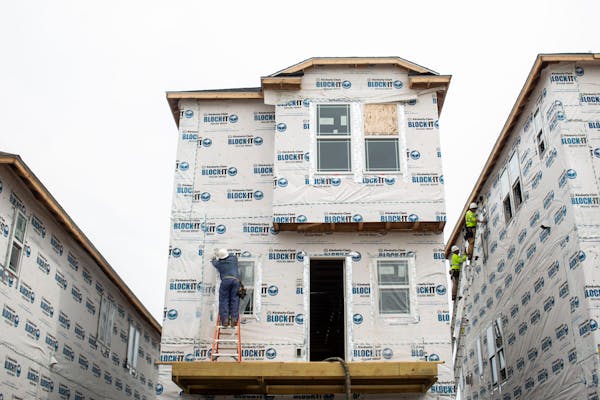If you have electricity or natural gas service in Minneapolis, you'll be paying more next year as part of the city's plan to respond to climate change.
The Minneapolis City Council earlier this month approved, and Mayor Jacob Frey signed, the Climate Legacy Initiative, a set of fee hikes that will increase bills for all gas and electric customers — residential, industrial or commercial.
Starting in 2024, the plan is estimated to cost a typical household $1 more per month and generate about $10 million annually in the first several years. That might not sound like much in the context of the city's $1.7 billion annual spending plan, but it amounts to a tripling of city funds spent on climate response and is among the more aggressive plans for major American cities.
In broad strokes, the plan is being pitched as a key funding source for the city's ambitious Climate Equity Plan, the city's roadmap to respond to climate change through 2040, with an eye on economic and racial fairness.
The city's 2024 budget hasn't been finalized yet, and many of the details haven't been ironed out — and won't be for months, if not longer.
But here's some of what we know:
Weatherization first
About half of the money generated in the first year will go toward weatherizing homes, primarily through insulating attics and walls, and plugging drafts.
It's relatively low-tech and may not evoke sleek images of smart homes and solar arrays, but there's widespread agreement that the city's aging housing stock is literally leaking heat in the colder months. That's forcing furnaces and boilers to run longer, using more greenhouse gas-producing energy, and resulting in higher bills, often for the very people who can't afford it.
The city's goal is to weatherize 40,000 homes by 2040, so work needs to start soon.
And the work, while disruptive to people living inside, is relatively cheap: generally thousands of dollars per house.
"Sure, there's lots of demand from people like me to put solar on our house," said Council Member Lisa Goodman, one of the lead sponsors of the plan, noting that she already has solar — and could, with government incentives, afford to install it. "But that's not our priority because that's not where we get the biggest bang for the buck. It is to grab the lowest-hanging fruit with the greatest impact. And that's weatherization."
Which homes?
In theory, everyone is eligible for the funds, but the first priority is to weatherize homes of those who can least afford it. Qualifying homeowners would pay nothing.
Officials envision a point-based system that takes into account wealth and location, with an emphasis on areas where poorly insulated homes are concentrated.
Those areas include the city's two "green zones," where there are high numbers of historically marginalized communities and higher levels of pollution than elsewhere.
In the Northside and Southside Green Zones, the city might attempt to attack the problem at an unprecedented scale: by going block by block, attempting to make improvements to every home, unless the owner opts out.
That's similar to how St. Paul is trying to replace old lead water pipes. Because of the scale, city officials envision a benefit of creating union jobs, which usually pay higher wages than smaller home contractors that typically handle residential projects.
Bureaucracy startup
While the city currently has a suite of programs aimed at reducing greenhouse gas emissions, the daunting volume of work to be done — and the relative windfall of $10 million annually — can't be managed with current staffing levels, city officials say.
Nearly half the money in the first year will go toward hiring new workers and contracting with outside firms to get programs started. Rules have to be written, funds need to be tracked and the public needs to be informed — all within the structure of the city's bureaucracy.
After all, it's not just about weatherizing century-old bungalows. In the coming years, the city aims to expand electric-vehicle charging networks, electrify buildings by replacing natural gas-burning appliances with greener electric ones, and myriad other efforts ranging from planting trees to producing biochar, a form of charcoal that can capture carbon and improve soil health.
Next year, Frey's proposed budget envisions hiring 12 new full-time employees across four city departments, from health to public works.
Carolyn Parnell, 'trailblazer' who served as Minnesota's first IT commissioner, dies


